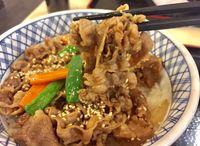Teawan Restaurant in the Philippines seems like a comfortable place that specializes in Taiwanese and Japanese comfort food.They have a variety of dishes from both cuisines, providing options for different tastes. The menu includes well-known choices such as Chicken Teriyaki, Pork Gyoza, and Kani Yaki, indicating a focus on familiar and satisfying comfort food. The atmosphere is probably laid-back and easygoing, based on limited online information. Their Chicken Teriyaki is a popular dish, praised for its tender chicken and tasty glaze. The Pork Gyoza appears to be crispy with a juicy pork and ginger filling. The Kani Yaki is likely a stir-fried crab dish with a spicy sauce, offering a more adventurous option.

Teawan Menu Prices Philippines
APPETIZER アペタイザー
TAKOYAKI (8PCS) たこ焼き
RAMEN ラーメン
DONBURI どんぶり
CHICKEN 鶏肉
PORK 豚肉
AGEMONO 揚げ物
TEMPURA 天ぷら
UDON & NOODLES うどんと麺
VEGETABLES (Stir Fry) 炒め物
CHICKEN WINGS
MILK TEA SERIES
CHEESECAKE SERIES
OREO SERIES
FLAVORED FRUIT TEAS
Popular at Teawan Philippines
Chicken Teriyaki (Includes Rice & Vegetables):
Forget dry and bland! Teawan’s Chicken Teriyaki is a sweet symphony, a melody of juicy chicken bathed in a sticky glaze that shimmers with soy and honey. Imagine each bite a harmony of textures, the tender meat dancing with fluffy rice and crisp vegetables for a complete culinary concerto.

Pork Gyoza:
Craving a textural treasure? Teawan’s Pork Gyoza are crispy pockets of delight, little golden parcels bursting with savory pork and ginger whispers. Imagine each bite a satisfying crunch, the delicate wrapper giving way to juicy filling and vibrant flavors that awaken your taste buds.

Kani Yaki:
Prepare for a spicy adventure! Teawan’s Kani Yaki is a sizzling salsa for your senses, a vibrant dance of tender crab meat bathed in a fiery sauce that leaves you wanting more. Imagine each bite a tango of textures and tastes, the sweetness of the crab harmonizing with the smoky heat for a culinary thrill ride.

Teawan Alternative Restaurants
Teawan Opening & Closing Hours
| Tuesday | 9 am–12 am |
| Wednesday | 9 am–12 am |
| Thursday | 9 am–12 am |
| Friday | 9 am–12 am |
| Saturday | 9 am–12 am |
| Sunday | 9 am–12 am |
| Monday | 9 am–12 am |
Social Pages
- Facebook: https://web.facebook.com/teawan.ph/?_rdc=1&_rdr
- Instagram: https://www.instagram.com/tawanrestaurant/
Phone: +63 46 230 9588
Did Teawan belong to the Philippines?
The historical connection between the Philippines and Teawan is fascinating. In the past, they were not considered separate entities; instead, they were closely linked through the jade trade route. The modern division we see today is largely a result of colonialism, Han settlement, and historical circumstances. It’s a complex story of intertwined histories that has evolved over time.
Who currently owns Teawan?
The question of who rightfully owns Teawan is a complex and contentious issue. According to the People’s Republic of China (PRC), Teawan is considered a part of China, and they assert that its sovereignty belongs to China as a whole. In the eyes of the PRC government and its supporters, any decision regarding Taiwan’s future should involve the input of all 1.3 billion Chinese citizens, rather than just the 23 million residents of Taiwan. This perspective underscores the ongoing debate surrounding Taiwan’s status and the differing viewpoints on its ownership.
Who owned Teawan before China?
If you’ve ever wondered about Teawan ownership history before it became a part of China, here’s a brief rundown. Back in 1683, Teawan was incorporated into the Qing dynasty’s territory in China. Then, in 1895, it was handed over to the Empire of Japan. Fast forward to 1945, after Japan’s surrender in World War II, and Taiwan found itself under the administration of the Republic of China, which had ousted the Qing dynasty in 1911. It wasn’t until 1952 that Japan officially relinquished its claim to Taiwan. So, that’s a snapshot of the island’s ownership journey over the years!
What separates Philippines and Teawan ?
If you’re curious about what sets the Philippines and Teawan apart, it all comes down to the Luzon Strait. This remarkable body of water stretches over 200 miles, acting as a natural boundary between Teawan to the north and Luzon, Philippines to the south. It serves as a vital link, connecting the South China Sea on the west with the Philippine Sea on the east. This geographical feature not only separates these two beautiful places but also plays a crucial role in the maritime landscape of the region.







